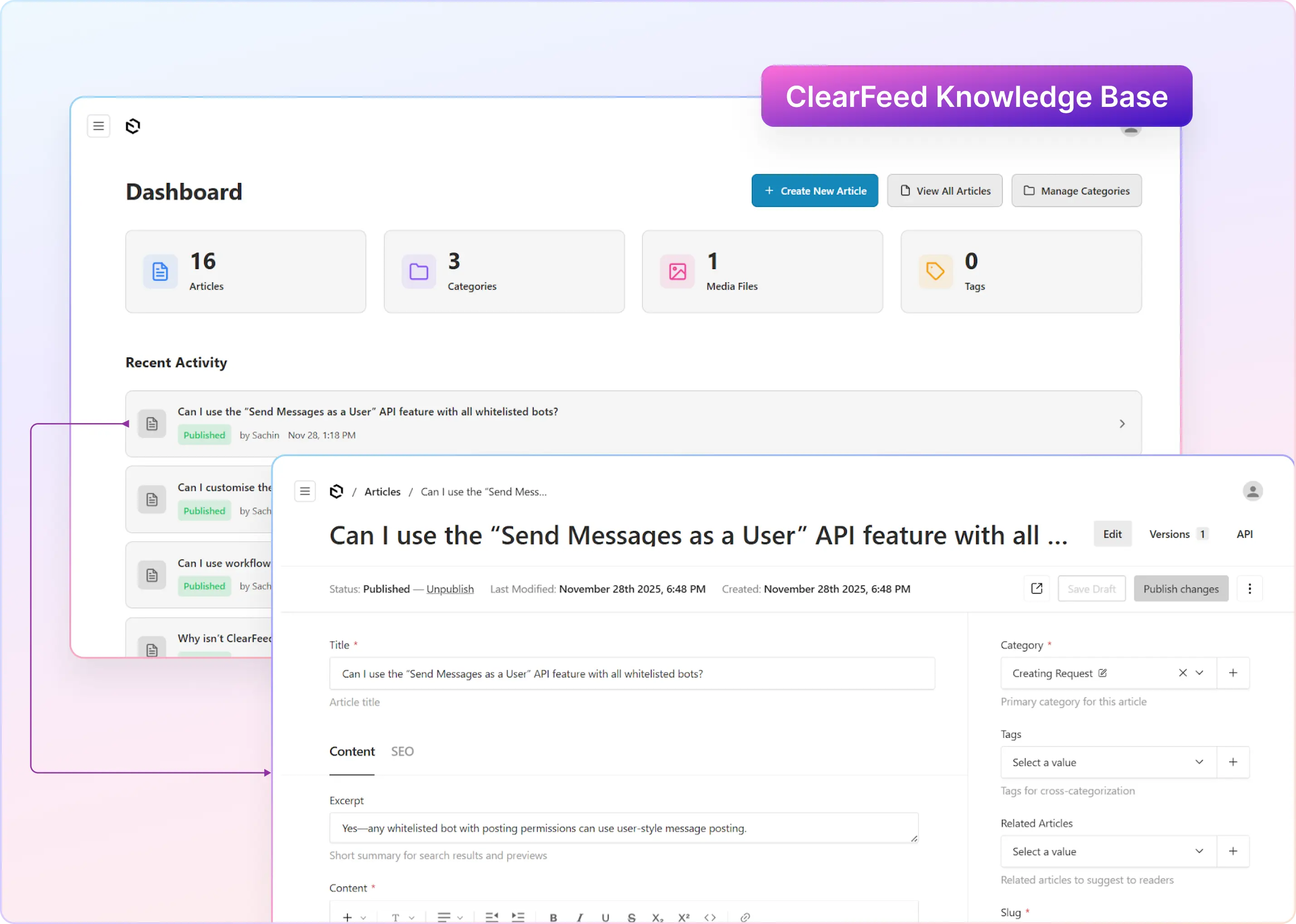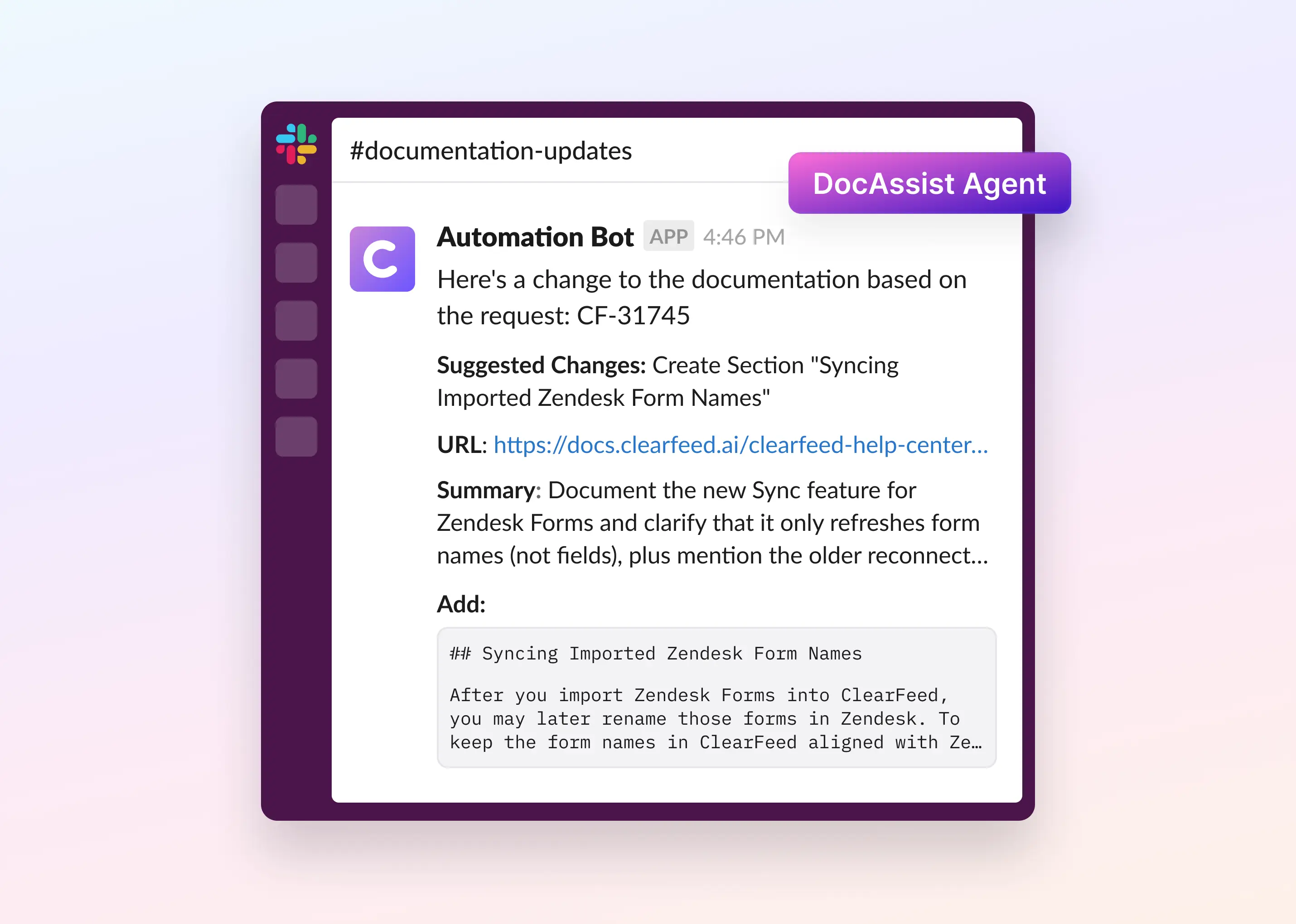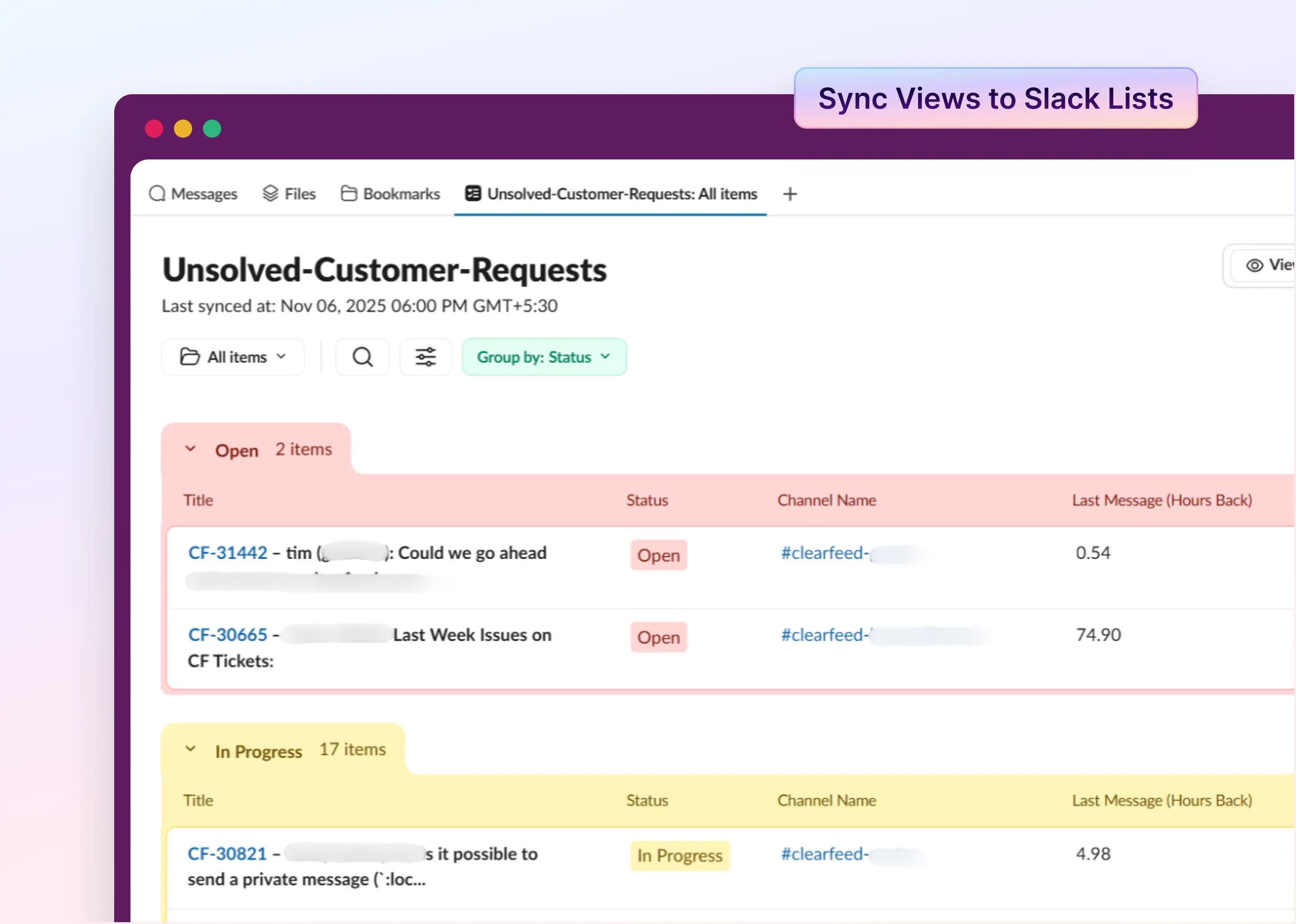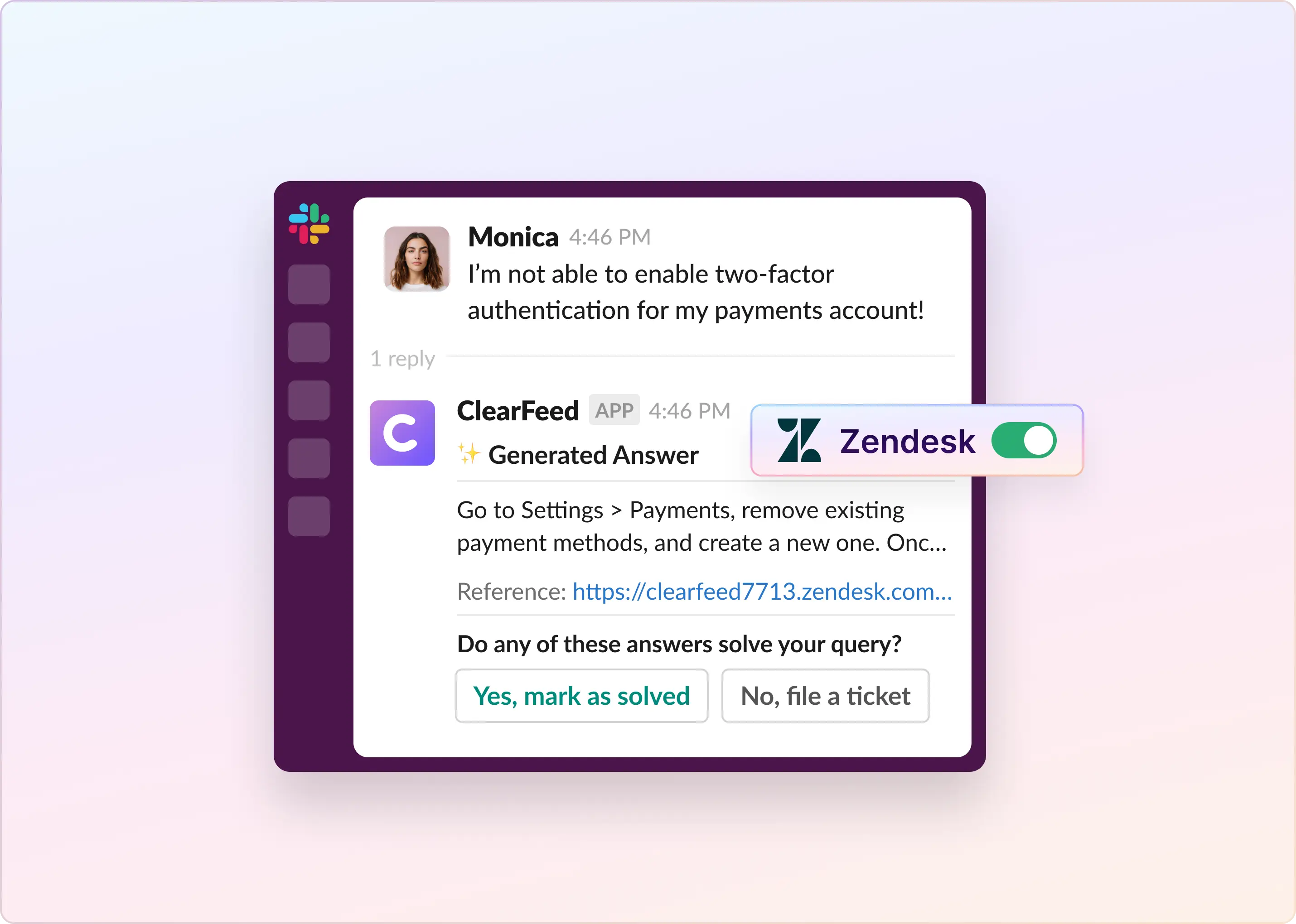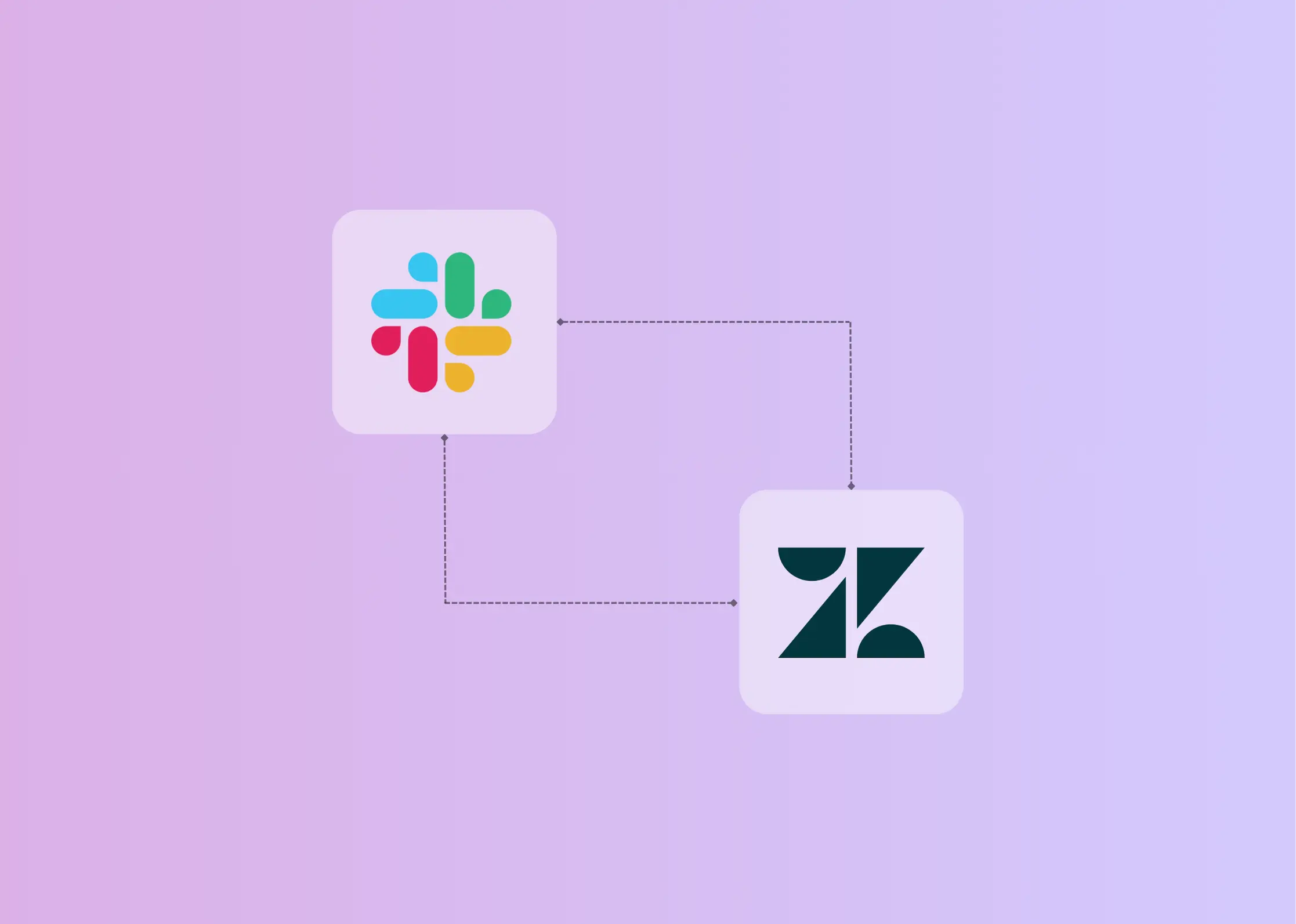Customer service teams have excelled at using tools like Zendesk to meet and manage growing customer demands. Zendesk helps organize tickets, track customer interactions, and improve response times.
However, a study shows that 77% of companies rely on real-time communication tools like Slack to improve team collaboration. That is why you should consider integrating your Zendesk notifications into Slack. This can help you achieve better team communication and streamlined support for ticket management.
This setup can bridge the gap between your customer service platform and the channels your team already uses for daily communication. Let's go through how to set it up step-by-step and manage it effectively for your team.
Benefits of Integrating Zendesk Slack Notifications
Zendesk notifications in Slack make it easy to stay updated on support tickets. Here are the advantages of setting up Zendesk with Slack notifications:
- Instant Notifications: Receive real-time updates on new tickets, changes, or escalations directly in Slack.
- Improved Team Collaboration: Team members can quickly respond to ticket updates within Slack without switching platforms.
- Faster Response Times: Immediate alerts address tickets promptly, improving customer satisfaction.
- Streamlined Workflow: Consolidates communication by bringing Zendesk updates into a platform the team already uses daily.
- Customized Alerts: Tailor notifications based on ticket priority, type, or department to keep the focus on critical tasks.
This setup helps your support team identify key customer service issues by boosting efficiency and collaboration.
Challenges of Zendesk Slack Notifications Integration
Integrating Zendesk notifications with Slack can greatly improve real-time ticket management, but the process comes with challenges. Here are some common issues teams face during the integration process:
- Notification Overload: Without proper trigger configuration, too many notifications can flood Slack, stress out teams, and reduce productivity. For example, every time a ticket is updated, the entire team gets notified regardless of priority. This can quickly become distracting.
- Irrelevant Updates: Sending non-critical ticket updates to all team members can clutter channels and cause essential notifications to be missed.
- Configuration Errors: Mistakes in setting up webhooks or triggers can lead to broken integrations, causing notifications to fail or appear in the wrong channels.
- Delayed Notifications: Sometimes, notifications from Zendesk may experience delays when reaching Slack, causing teams to respond later than expected. This could be due to system delays or misconfigured triggers.
You can make the most of this integration by being aware of these challenges and proactively addressing them.
Best Practices for Linking Zendesk Notifications with Slack
To ensure easy integration between Zendesk and Slack, following best practices that optimize both platforms is important. Here are a few key strategies:
- Define Clear Notification Triggers: Customize which ticket events trigger notifications in Slack. For example, you can set up an alert for high-priority tickets or when a ticket changes status.
- Use Specific Slack Channels: Create dedicated channels for different notifications, such as customer service, escalations, or technical issues. This prevents overcrowding.
- Monitor Notification Volume: Monitor the volume of notifications sent to Slack. Too many notifications can become disruptive.
- Use AI Automated Solutions: Use AI-powered platforms like ClearFeed to automate reminders, ticketing, and request management. ClearFeed leverages AI to streamline workflows so that your team receives every request without manually managing every update. This maximizes your efficiency and eliminates human error.
- Test Regularly: Occasionally review and adjust your notifications to ensure they remain relevant and updated.
Using these best practices, you can ensure the integration works seamlessly with your workflows. However, setting up Zendesk notifications in Slack can be a bit difficult. However, by following a few simple steps, you can easily link both platforms for real-time alerts.
Creating a Slack App for Notifications
Setting up a Slack app for Zendesk notifications is a straightforward process but plays a crucial role in linking the two platforms. Begin with the following steps:
Step 1: Create an App
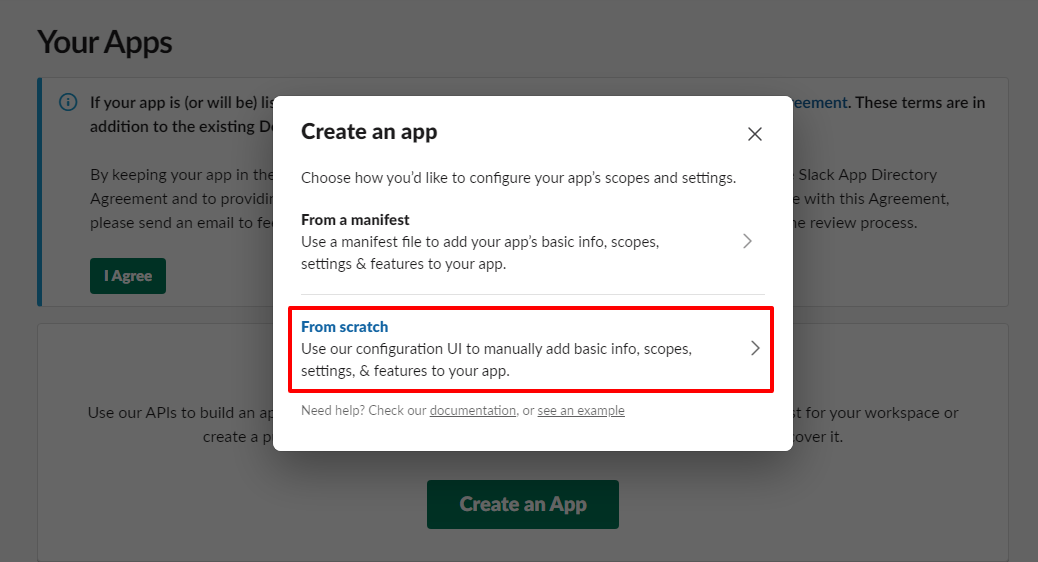
To begin, you'll need to create a custom Slack app that will act as the gateway for your Zendesk notifications. Log into your Slack account from your browser. Then, head over to the Slack API page to create your app.
Click on "Create New App.” Then, select the option to build the app “From scratch.”
Step 2: Naming the App and Selecting the Workspace

You’ll now be prompted to give your app a name. Choose something relevant to its function, like “Zendesk Notifications,” so it’s easy to identify.
After naming the app, you’ll select the Slack workspace where the notifications will be sent. This is important, as each workspace can have different channels and permissions. After naming your app, it’s time to configure the necessary features.
Step 3: Activate the Incoming Webhooks Feature
On the next screen, navigate to Incoming Webhooks under the Features tab.
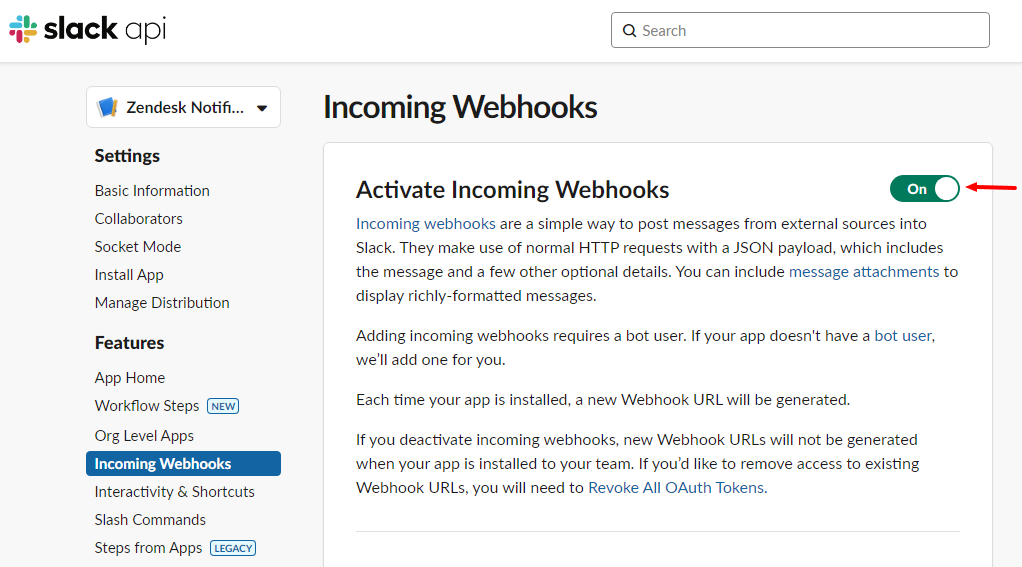
Make sure that the Activate Incoming Webhooks button is switched ON. It allows external services (in this case, Zendesk) to send messages into Slack.
Once activated, scroll down to the bottom of the page and click on Add New Webhook to Workspace.
Step 4: Choosing a Slack Channel for Notifications
Now that the webhook is activated, you must decide where the notifications will go. You can choose an existing Slack channel or create a new one for Zendesk notifications.

Select your desired channel and click on Allow.
For example, creating a channel called #ticket-updates will keep these notifications organized and easy to find. It’s essential to pick a channel relevant to the support team or specific departments handling particular tickets.

This will generate a unique Webhook URL you'll use later when configuring Zendesk to send notifications.
Setting Up a Webhook in Zendesk
Once you’ve set up your Slack app, it’s time to configure a webhook in Zendesk to allow the two platforms to communicate effectively. A webhook is essentially a bridge that lets Zendesk push notifications and ticket updates directly to Slack.
Here’s how you can do it step by step:
Step 1: Create a New Webhook
Log into your Zendesk account and go to the Webhooks page. You can find this under Admin Center > Apps and Integrations > Webhooks. Click on the Create Webhook button.

Choose your preferred method of connection and click Next.
Step 2: Input the Endpoint URL
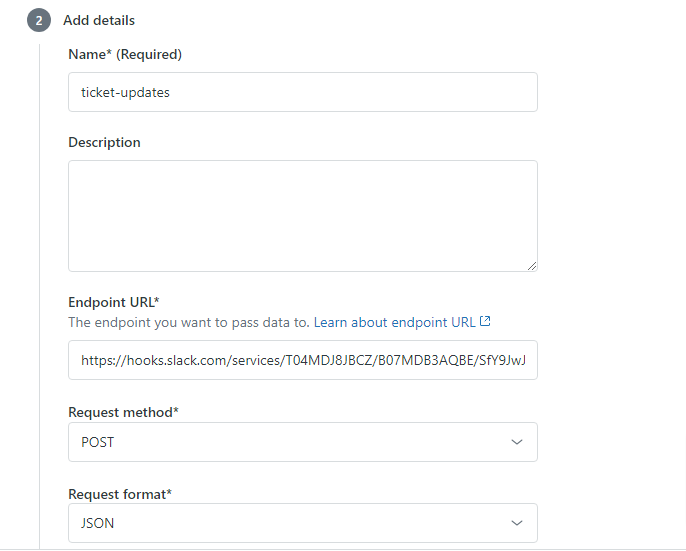
In this section, fill in the following details: name, description, and other information.
In the Endpoint URL, paste the Slack webhook URL you created when setting up your Slack app. This URL tells Zendesk where to deliver the notifications, ensuring a seamless connection between both platforms.
Next, set the Request Method to POST. This method allows Zendesk to send data, like ticket updates, directly to Slack.
Configure the Request format by selecting JSON as the content type. This format is widely used because it’s simple, lightweight, and perfect for sending structured data.
Finish by clicking on the Create webhook button.
Once you've completed these steps, the connection between Zendesk and Slack will be live. From this point on, Zendesk will automatically push ticket updates to your chosen Slack channel, streamlining your team’s ability to manage customer service inquiries.
Creating Triggers in Zendesk for Slack Notifications
The next step is to create triggers within Zendesk that tell it when to notify Slack.

This is where you define the specific scenarios for sending a notification to Slack. For example, you may want to send an alert every time a new ticket is created, a high-priority ticket is updated, or a ticket is escalated.
To do this, go to Admin > Objects and rules > Triggers and click the Create Trigger button.
Set Trigger Conditions
After naming the trigger, you must define the conditions to activate it.

These conditions can include ticket status changes, priority updates, or even specific actions agents or customers take. You can fine-tune the notifications to fit your team's needs here.
For example, you might set conditions like, "If the ticket priority is Urgent" or "If a ticket is assigned to a specific agent or group."
Set Trigger Action to Forward Messages to Slack
Now that you’ve defined the conditions, it’s time to specify the action. We’ll set the action to send a notification to Slack.
Simply click on Add Action under the Actions tab.

In the tab, select Notify by > Active Webhook and select the endpoint. Choose the Slack channel you set up earlier and customize the message content here.
Zendesk allows you to include important details in the notification, such as ticket ID, requester’s name, subject, and a short description of the issue.
The action can be set using JSON payloads, which tell Zendesk what information to include in the message sent to Slack. For example, you could structure a message that says:
New Urgent Ticket: #{{ticket.id}} by {{ticket.requester.name}}. Issue: {{ticket.subject}}.

This is how your ticket notifications should look in Slack.
You can also check out how to efficiently convert Slack messages into support tickets.
Enhancing Notification Messages
Personalizing your Zendesk notification messages can make a big difference in their effectiveness for your team.
One way to improve them is by using Zendesk Support Placeholders to include dynamic content like ticket ID, customer name, or ticket status. This ensures that every message is specific and relevant.
You can use Liquid markup to format notifications, making essential details stand out with bold text or line breaks for better readability. To go even further, Slack's message builder allows you to visualize and design notifications with attachments, buttons, or rich media for more engaging and interactive messages.
Advanced Integration Features
Take your Zendesk-Slack setup to the next level, giving you more control and flexibility over your support process.
- Multiple Slack Channels: You can configure Zendesk to send specific notifications to different Slack channels. For instance, ticket updates can go to the support channel, while escalations might be directed to a management channel. This helps categorize and prioritize updates effectively.
- Private Channels and Direct Messages: Notifications can be sent to private channels or even as direct messages to individuals. This is especially useful for sensitive tickets that require restricted access or immediate attention from specific team members.
- Two-Way Conversations: Some advanced setups allow for two-way communication. Agents can respond directly to Slack tickets logged in to Zendesk, keeping communication flowing without needing to jump between platforms.
- Custom Ticket Forms: You can create custom ticket forms that generate Slack notifications based on specific criteria. This allows your team to effectively manage critical issues that require special handling.
Learn more about handling ticket support by following the best practices to manage tickets effectively.
Testing and Troubleshooting the Integration
Once you’ve set up the Zendesk and Slack integration, testing it before going live with your team is essential. Start by creating a test ticket in Zendesk to ensure that notifications are being sent to the designated Slack channel as expected. This step helps verify that the webhook and trigger settings are functioning correctly.
- Review your webhook configuration if notifications are missing or incorrectly formatted.
- Double-check the webhook URL to ensure it’s correctly linked to your Slack app.
- Verify that the trigger settings are correctly configured and the conditions are accurate and relevant.
- Ensure the appropriate Slack channel or target is selected for notifications.
- If notifications appear but aren’t formatted correctly, you may need to tweak your JSON payload or Liquid markup to improve readability.
Finally, always look for potential misconfigurations and run tests periodically to maintain smooth operation.
Simplify Your Zendesk-Slack Integration with ClearFeed
If setting up Zendesk notifications in Slack feels like a lot of work, ClearFeed offers a simple way to connect Zendesk to Slack without the hassle.
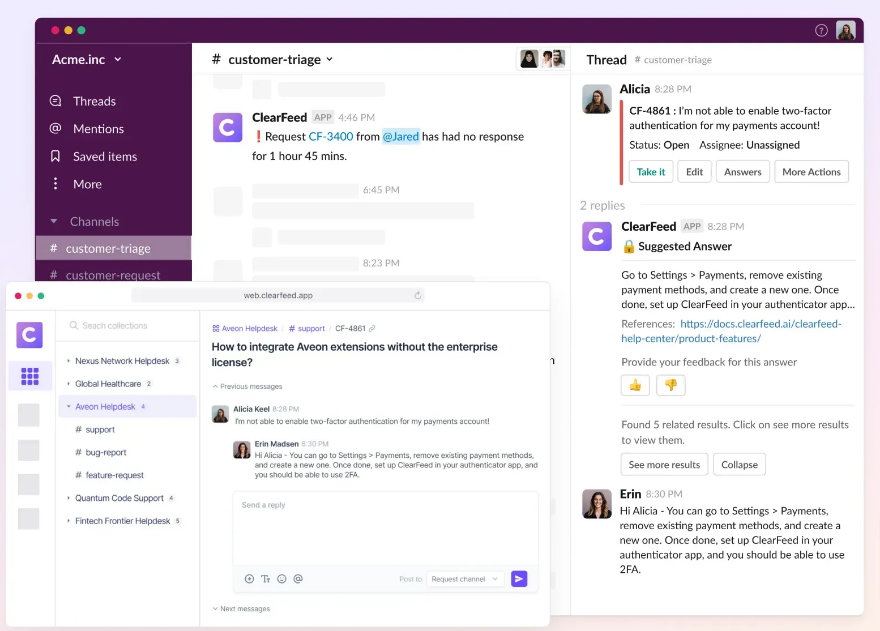
ClearFeed is an AI-powered platform that simplifies the complications of integrating Slack with Zendesk. It also provides seamless bidirectional integration with external ticketing systems like Zendesk, Jira, Salesforce, and more. This allows your team to manage requests directly from Slack without complicated setups.
Here’s why ClearFeed stands out:
- Automated Ticketing: Tired of turning every message into a ticket manually? ClearFeed automatically converts messages into tickets, so your support process stays smooth.
- AI-Generated Reminders: Forget about constantly following up on requests. Never miss a request with intelligent AI reminders that keep your team on track.
- Real-Time Notifications: Stay updated with automated notifications that trigger immediately when tickets are created or updated.
Don’t let complex setups slow down your support process any longer. Experience a smarter and more efficient support system. Request a demo now to see how ClearFeed can transform your operations.





